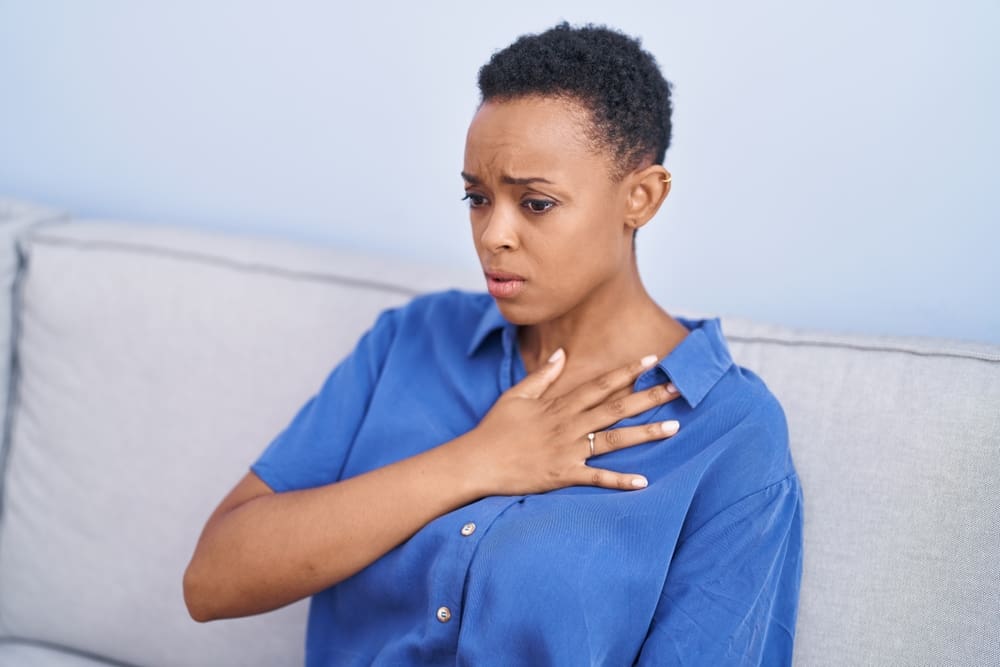Picture this scenario – a woman in her fifties starts feeling unusually tired, experiences some jaw pain, and feels nauseous during what should be a normal day. She mentions it to friends who suggest she might be getting the flu. She tells her doctor who runs some basic tests that come back normal. Three days later, she has a massive heart attack that could have been prevented if anyone had recognized what was actually happening.
This isn’t a rare occurrence or medical anomaly. It’s happening thousands of times every year because our entire understanding of heart attack symptoms is based on how they typically present in men, while women’s heart attacks often look completely different. The result is a deadly game of medical hide-and-seek where women’s lives are at stake.
The tragedy isn’t just that women are having heart attacks – it’s that they’re having heart attacks that go unrecognized, untreated, and often prove fatal because both patients and medical professionals are looking for the wrong warning signs. Understanding this difference isn’t just medical trivia – it’s potentially life-saving information that every woman needs to know.
The Hollywood heart attack versus reality
When most people think of heart attacks, they picture the dramatic scene from movies – a man clutching his chest, experiencing crushing pain, and collapsing dramatically. This theatrical representation has become so ingrained in our collective consciousness that it’s literally killing women who don’t experience these “textbook” symptoms.
The classic male presentation of sudden, severe chest pain radiating down the left arm is real and does happen, but it represents only one way that heart attacks can manifest. Women are significantly more likely to experience subtler symptoms that can easily be mistaken for other conditions or dismissed as stress, anxiety, or normal aging.
This gender difference in symptom presentation isn’t just a minor medical footnote – it’s a matter of life and death. Women are more likely to die from their first heart attack than men, partly because their symptoms are less likely to be recognized as cardiac events requiring immediate medical intervention.
The movie version of heart attacks has created dangerous expectations that delay treatment for women whose heart attacks don’t follow the Hollywood script. When reality doesn’t match expectations, both patients and healthcare providers can miss critical opportunities for intervention.
Exhaustion isn’t just being tired
One of the most commonly overlooked heart attack symptoms in women is profound, unusual fatigue that seems to come out of nowhere. This isn’t the normal tiredness from a busy day or lack of sleep – it’s an overwhelming exhaustion that feels completely different from anything experienced before.
Women having heart attacks often describe feeling like they can barely lift their arms, climbing stairs feels impossible, or simple activities that were never challenging suddenly require enormous effort. This crushing fatigue can develop suddenly or build over several days before the actual heart attack occurs.
The problem is that women are culturally conditioned to push through fatigue and often dismiss these warning signs as consequences of busy lifestyles, hormonal changes, or just getting older. Healthcare providers might also attribute unusual fatigue to depression, stress, or other non-cardiac causes.
This exhaustion reflects the heart muscle’s struggle to pump blood effectively when coronary arteries are blocked or narrowed. The body diverts energy to maintain critical functions, leaving women feeling drained in ways that seem disproportionate to their activity levels.
Pain shows up in unexpected places
While men typically experience chest pain during heart attacks, women are more likely to feel discomfort in their back, shoulders, neck, jaw, or arms. This pain pattern is so different from the expected presentation that it’s often attributed to muscle strain, dental problems, or other non-cardiac causes.
Jaw pain is particularly common in women having heart attacks, but it’s frequently dismissed as TMJ disorder, dental issues, or stress-related tension. Back pain between the shoulder blades can be mistaken for muscle strain or poor posture, especially in women who spend long hours at computers or caring for others.
The pain women experience during heart attacks is also often described differently than the crushing chest pain associated with male heart attacks. Women might describe pressure, squeezing, or fullness rather than sharp pain, making their symptoms seem less urgent or dramatic.
This scattered pain pattern occurs because women’s coronary artery disease often develops differently than men’s, affecting smaller vessels and creating more diffuse symptoms rather than the localized chest pain that comes from blockages in major coronary arteries.
Digestive symptoms create dangerous delays
Nausea, vomiting, and stomach discomfort are significantly more common in women having heart attacks than in men, but these symptoms are easily mistaken for food poisoning, stomach flu, or other digestive issues. This misattribution can delay appropriate treatment for hours or even days.
Women might experience heartburn-like sensations, stomach cramping, or feeling like they’re about to vomit during heart attacks. These symptoms can be particularly misleading because they seem completely unrelated to heart problems and might prompt treatment for gastrointestinal issues instead of cardiac evaluation.
The connection between digestive symptoms and heart attacks in women reflects the complex nerve pathways that carry pain signals from the heart. In women, these signals are more likely to be interpreted by the brain as coming from the digestive system rather than the heart itself.
Emergency room visits for “stomach problems” that turn out to be heart attacks are more common in women than men, representing critical delays in diagnosis and treatment that can significantly impact outcomes and survival rates.
Shortness of breath without chest pain
Many women experiencing heart attacks develop shortness of breath or difficulty breathing without any accompanying chest discomfort. This isolated respiratory symptom is often attributed to anxiety, asthma, or being out of shape rather than recognized as a potential cardiac emergency.
The breathing difficulty women experience during heart attacks might feel like inability to catch their breath, feeling winded from minimal exertion, or sensing that they can’t get enough air despite not being physically active. This can develop gradually or appear suddenly.
Without accompanying chest pain, shortness of breath doesn’t trigger the immediate cardiac concern it should. Women might rest, use inhalers, or try breathing exercises when they should be seeking emergency medical care for a potential heart attack.
This breathing difficulty reflects the heart’s inability to pump blood effectively, leading to fluid backup in the lungs or reduced oxygen delivery throughout the body. It’s a serious symptom that deserves immediate medical evaluation, especially when it’s unusual or severe.
The anxiety dismissal trap
Perhaps the most dangerous aspect of women’s heart attack symptoms is how often they’re dismissed as anxiety or panic attacks, both by patients themselves and by healthcare providers. The symptoms of heart attacks in women can overlap significantly with anxiety symptoms, creating confusion that delays appropriate treatment.
Sweating, rapid heartbeat, feeling of impending doom, shortness of breath, and nausea can all occur in both heart attacks and panic attacks. However, women having heart attacks might be told they’re just stressed or anxious, especially if they don’t present with obvious chest pain.
This dismissal is particularly problematic because women are more likely than men to have their symptoms attributed to psychological rather than physical causes. The intersection of gender bias and symptom presentation creates a perfect storm for missed diagnoses.
The stakes of this misattribution are enormous. While panic attacks are uncomfortable but not life-threatening, heart attacks require immediate medical intervention. The time lost to anxiety treatment can be the difference between survival and death.
Age assumptions create blind spots
Heart disease in women is often considered a disease of older, post-menopausal women, but heart attacks can and do occur in younger women, especially those with risk factors like diabetes, high blood pressure, smoking, or family history of heart disease.
Younger women experiencing heart attack symptoms are particularly likely to have their symptoms dismissed or attributed to other causes because healthcare providers don’t expect heart attacks in women under 50. This age bias can delay diagnosis and treatment when rapid intervention is most critical.
The assumption that heart disease primarily affects older women also means that younger women might not recognize their own symptoms as potentially cardiac. They might push through concerning symptoms because they don’t fit the demographic profile they associate with heart problems.
Even women in their thirties and forties can experience heart attacks, and their symptoms are just as likely to be atypical as those of older women. Age should never be used to rule out cardiac causes of concerning symptoms in women.
Fighting for proper evaluation
Women experiencing potential heart attack symptoms often need to advocate aggressively for appropriate cardiac evaluation, especially when their symptoms don’t match typical expectations. This advocacy can be lifesaving but shouldn’t be necessary.
If you’re experiencing unusual fatigue, unexplained pain in your jaw, back, or arms, persistent nausea, or shortness of breath that seems disproportionate to your activity level, insist on cardiac evaluation including an EKG and cardiac enzyme blood tests.
Don’t accept dismissive explanations that attribute concerning symptoms to stress, anxiety, or normal aging without proper cardiac workup. If one healthcare provider doesn’t take your symptoms seriously, seek a second opinion or go to an emergency room.
Trust your instincts about your body. If something feels seriously wrong or different from anything you’ve experienced before, especially if you have cardiac risk factors, pursue evaluation until you get answers that make sense.
Changing the conversation saves lives
The first step in addressing this deadly gap in heart attack recognition is changing the conversation about what heart attacks actually look like in women. Education about atypical symptoms needs to reach both healthcare providers and the general public.
Women need to know that heart attacks don’t always announce themselves with dramatic chest pain and that subtle symptoms deserve serious attention. Healthcare providers need training about gender differences in cardiac symptom presentation and the importance of considering heart attacks even when symptoms seem atypical.
This isn’t about creating anxiety or making women paranoid about normal aches and pains. It’s about ensuring that serious cardiac symptoms get the rapid evaluation and treatment they deserve, regardless of whether they match traditional expectations about how heart attacks should look.
















